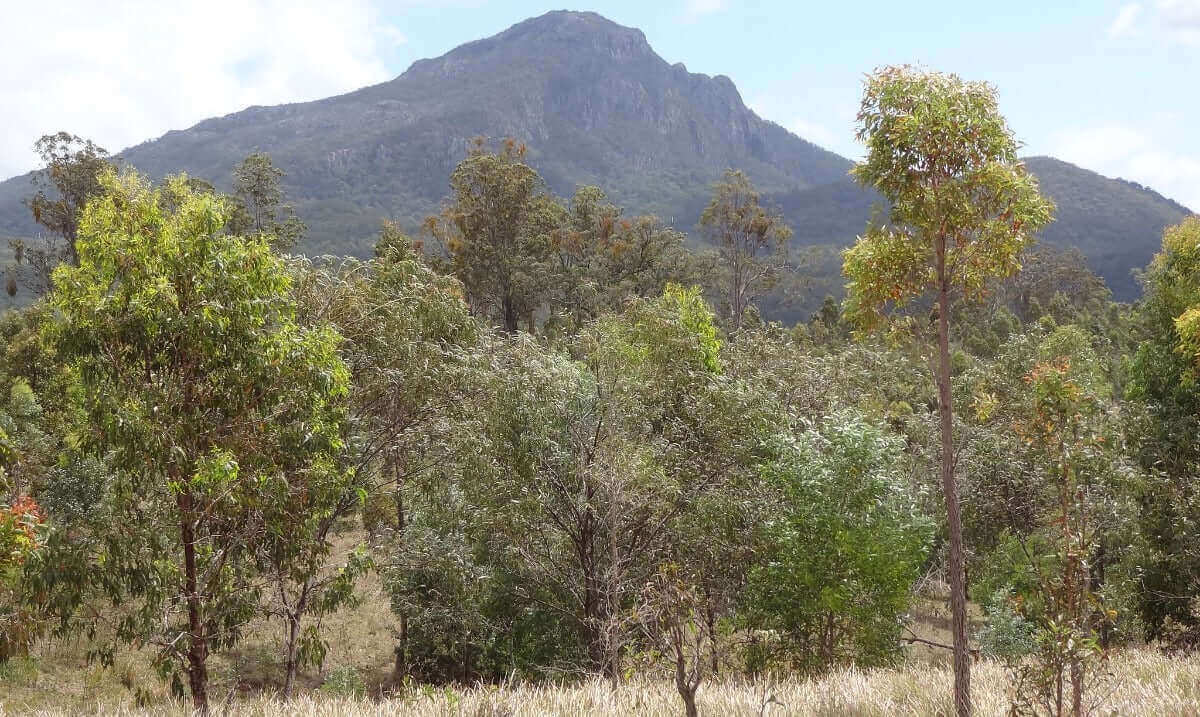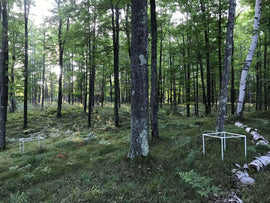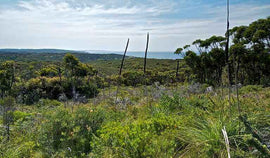Across bare hills just outside Rathdowney, QLD, Greenfleet is restoring native forest on old farming country. On the 400 ha Minjelha Dhagun farm, 60 ha was set aside for a Greenfleet revegetation project, with 60,000 native eucalypts planted in April 2008.
Biodiverse forests help individuals and businesses reduce the impact of their greenhouse gas emissions and return added benefits to the Australian environment. For Minjelha Dhagun, there are additional social benefits as well, with the revegetation program providing bush tucker and forest management experience for the Traditional Owner community, the Yugambeh people.
Yugambeh Land Enterprises was established in 1997 with the mission of restoring Yugambeh people to their country, caring for the lands in their current possession, and acquiring more.
Minjelha Dhagun, nestled at the foot of Mt Barney, Queensland, is a co-operative of eight indigenous clans from the Yugambeh language group.
The plantings at Minjelha Dhagun started out as ten-centimetre seedlings in 2008. Years later, the trees are now reach many meters tall - the forest’s growth has been impressive.
The seedlings Greenfleet planted responded well to a couple of relatively wet years and are now well established. Being next to the national park has also helped, with several understorey species establishing across the fence. This all builds on the biodiversity values and integrity of the site, and to its cultural value to the Traditional Owners.
In November 2010, Greenfleet completed the first carbon measurements at Minjelha Dhagun. The growth of the trees was already running ahead of schedule and the biodiversity values are exceeding even the most optimistic forecasts.
Mt Barney is a important habitat for the Glossy Black Cockatoo, listed as vulnerable in Queensland and endangered on a national level - with habitat loss its greatest threat.
Greenfleet and the Yugambeh people included Forest Sheoak (Allocasuarina torulosa) in the planting to provide crucial habitat for the Glossy Black Cockatoo.
Glossy Black Cockatoos are notoriously fussy eaters with their diet exclusively consisting of seeds from the Forest Sheoak. We’ve included several hundred Forest Sheoak trees in the planting mix as food trees and the gums will eventually provide shelter.
Yugambeh Land Enterprises noted "Before we got the land there was only grass and hardly a tree on this place as it was a cattle grazing area. Now we have birds and wallabies again and you also see koalas."

Location Size
Planting Dates
Species
- Allocasuarina torulosa
- Alphitonia excels
- Corymbia citriodora
- Corymbia intermedia
- Corymbia tesselaris
- Eucalyptus crebra
- Eucalyptus moluccana
- Eucalyptus siderphloia
- Eucalyptus tereticornis




